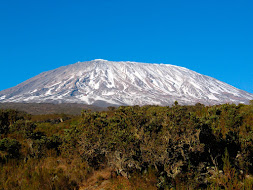Climbing Mount Kilimanjaro: A Guide to Animals, Threats and Fun Facts
Mount Kilimanjaro, the highest mountain in Africa, is a favorite destination for many adventure seekers. But before you embark on your journey, it's important to understand the unique challenges and rewards that await you.
Animals:
Climbing Kilimanjaro, you will encounter a variety of animals, from playful black and white colobus to elusive leopards. Here are some of the most adorable creatures you can see:
Elephants: These gentle giants roam the lower slopes of the mountain.
Buffalo: These powerful animals can be dangerous if threatened.
Zebras: These graceful animals are often seen grazing in the meadows.
Lions: These apex predators are rarely seen, but their presence is known.
Threats:
Although Kilimanjaro is a stunningly beautiful place, it is also a difficult and dangerous environment. Here are some of the potential threats you should be aware of:
Altitude sickness: This is a serious medical condition that can occur at high altitudes.
Hypothermia: This condition occurs when your body temperature drops too low.
Waterfall: The terrain on Kilimanjaro can be slippery and uneven, increasing the risk of falling.
Wild animals: Although most animals are not aggressive, it is important to be aware of the potential danger.
Interesting Facts:
Kilimanjaro is the highest free-standing mountain in the world.
It consists of three volcanic cones: Kibo, Mawenzi and Shira.
The mountain is home to a variety of glaciers and ice fields.
The first recorded ascent of Kilimanjaro took place in 1889 by Hans Mayer and Ludwig Purtscheller.
Climbing Kilimanjaro is an unforgettable experience. However, it is important to be prepared for challenges and risks. By understanding Kilimanjaro's wildlife, threats and fascinating facts, you can ensure that your journey is safe and enjoyable.




Comments
Post a Comment